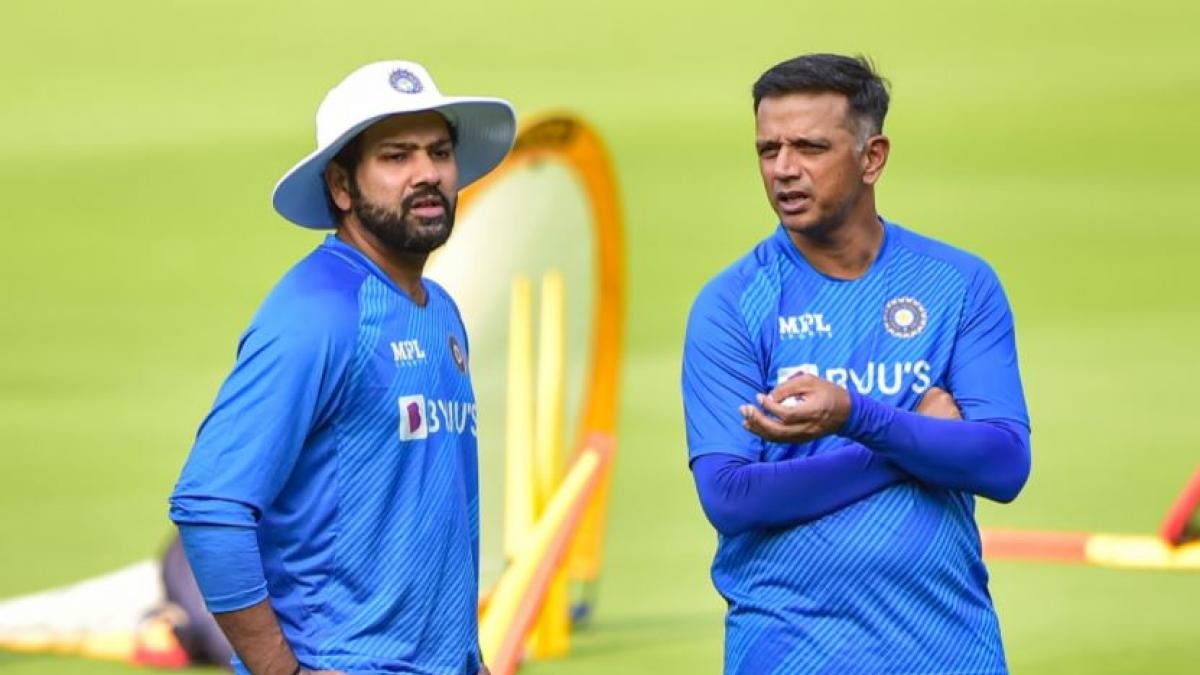
 Team India’s Captaincy Dilemma: Is Different Leadership Needed for Every Format?
Team India’s Captaincy Dilemma: Is Different Leadership Needed for Every Format?
Team India has been at the center of debates regarding the captaincy structure in international cricket. With an influx of matches, including the challenging IPL, the discussion on whether Team India needs different captains for each format has gained prominence. In the last year, Rohit Sharma has notably distanced himself from T20 cricket, allowing players like Hardik Pandya and Suryakumar Yadav to take charge of the Indian T20 team.
Rohit Sharma’s Break from T20 Cricket
Rohit Sharma, the captain of Team India and Mumbai Indians, has been absent from T20 cricket for the past year. This break has provided an opportunity for other players like Hardik Pandya and Suryakumar Yadav to showcase their leadership skills in the Indian T20 team. The question arises: Does Team India need a different captain for each format to ensure success?
Smart Captaincy in World Cup 2023
Rohit Sharma’s captaincy in the World Cup 2023 final was nothing short of brilliant. Despite India finishing as the runners-up, Sharma’s strategic decisions and leadership were widely praised. The Board of Control for Cricket in India (BCCI) is now contemplating whether Rohit Sharma should continue leading the team in the T20 format.
Rohit Sharma’s Leadership Pressure
Leading in all three formats, especially considering the demanding IPL, is no easy feat. Rohit Sharma’s captaincy responsibilities in Test, ODI, and T20 cricket, coupled with his role in the IPL, can take a toll on both his physical and mental well-being. Could split captaincy be the solution to reduce this pressure?
Benefits of Split Captaincy
Split captaincy has proven beneficial for teams like Australia and England. With Rohit Sharma at 36, managing captaincy across all formats becomes challenging. Implementing a split captaincy strategy, possibly with Hardik Pandya or Suryakumar Yadav as the permanent T20 captain, could alleviate the burden on Rohit Sharma and ensure sustained high performance.
Rohit Sharma’s Age Factor
At 36, Rohit Sharma has achieved remarkable success as the captain of Team India and Mumbai Indians. However, the age factor becomes crucial when contemplating leading in all formats. Splitting captaincy can potentially extend Sharma’s playing career and maintain his effectiveness in leadership roles.
Pressure Reduction through Split Captaincy
By appointing a permanent T20 captain from the talented pool of players like Hardik Pandya or Suryakumar Yadav, the burden on Rohit Sharma can be significantly reduced. This could positively impact his individual performance and contribute to Team India’s overall success in international cricket.
Preparing for the Future Captain
Identifying and grooming the next T20 captain is essential for Team India’s long-term success. Learning from the Dhoni-Kohli transition period, a strategic approach to captaincy succession planning can ensure a seamless shift in leadership.
Success Stories of Split Captaincy in Other Teams
Teams like Australia and England have successfully implemented split captaincy, with different leaders for different formats. Examining these success stories can provide valuable insights for Team India to optimize its leadership structure.
Team India’s Energy Boost with Different Captains
Diverse leadership in each format can inject fresh energy into the team, fostering a dynamic and competitive environment. Different captains bring unique strategies and perspectives, enhancing Team India’s adaptability across various playing conditions.
Strategic Use of Captains in Test and ODI Formats
Strategically assigning captains for Test and ODI formats allows specialization and focused leadership. This targeted approach can optimize player roles and enhance tactical planning for specific formats, ultimately contributing to improved performance.
Rohit Sharma’s Extended Leadership
Considering Rohit Sharma’s experience and success in Test and ODI formats, an extended tenure as the captain in these formats can be beneficial. This, coupled with a designated T20 captain, offers a balanced leadership structure for Team India.
Dhoni and Kohli’s Transition Period
Reflecting on the transition period from Dhoni to Kohli’s captaincy, Team India can draw lessons on the importance of a smooth leadership transition. Planning for the future captaincy ensures stability and continuity in the team’s performance.
The debate on whether Team India needs different captains for each format is fueled by the desire for sustained success in international cricket. While Rohit Sharma’s captaincy has been commendable, split captaincy emerges as a strategic solution to balance leadership responsibilities and ensure long-term success for Team India.
Read More: ICC to Receive Formal Complaint from Pakistan Regarding Indian Under 19 Squads Attitude

 Share
Share



